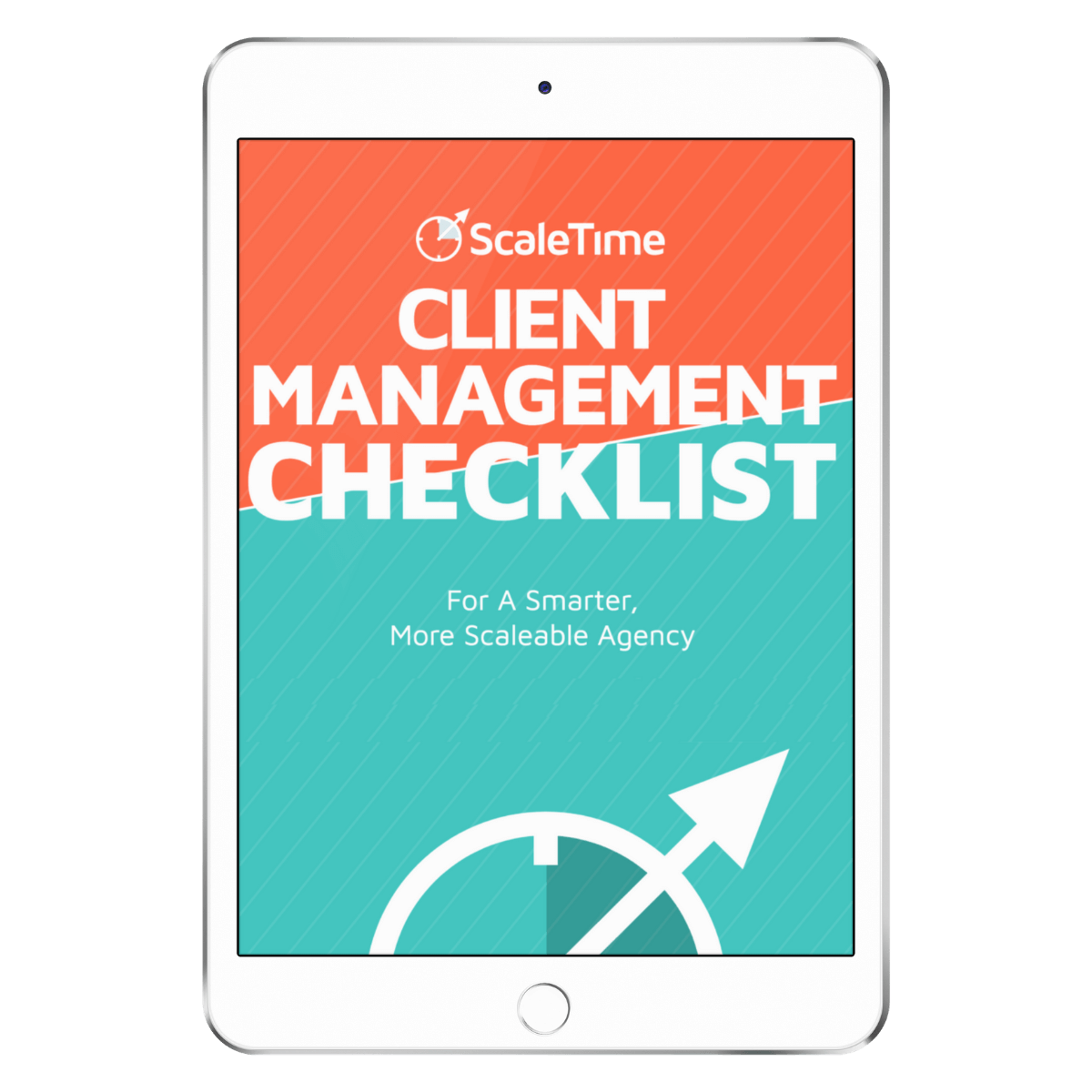Discover how the right process documentation template can revolutionize your digital agency's workflow, boosting efficiency and success

In a digital agency, navigating projects without process documentation is like playing a game of Twister with invisible limbs. Left foot on, "We should have documented that!" Right hand on, "Where did that file go?"
Yes, Twister can be fun if we play it as a game. But we don't want to work like that when handling projects!
"Yikes! If we only had a blueprint, this project would be easy!"
Well, there is a blueprint!
For project process efficiency, we want to follow the right process documentation so we're not confused about whose approach to follow to achieve the best outcome.
While digital agencies are masters of crafting compelling narratives and building engaging online experiences behind the scenes, we face efficiency issues such as:
- Scope creep
- Communication problems
- Unclear expectations
If we don't keep these in check, they can cripple productivity, hinder creativity, impact client satisfaction, and tank our profits.
So, what should we do?
We should have a project management SOP using a good process documentation template!
At ScaleTime, we understand your need to create stunning processes for your agency. So, we'll walk you through how a well-designed process documentation template catalyzes innovation, knowledge transfer, and continuous improvement in this article. We'll also show you how to create a simple process document template.
The Digital Agency Dilemma

Digital agencies face dilemmas and challenges all the time. They must figure out how to balance client expectations with what is realistically achievable within the given constraints, such as budget and timeline.
Frequently, agencies also face dilemmas when trying to quickly deliver a high volume of work while maintaining a high-quality standard. Agencies also have to navigate ethical challenges, such as privacy concerns, data security, and transparency in advertising.
Here's a real-life experience:
We were working on a high-profile e-commerce project for a client with ambitious sales targets. The dilemma arose when the client, driven by the urgency of competition, requested an expedited timeline for the project, pushing the boundaries of what our team could realistically achieve without compromising quality.
Sigh!
Now, we were torn between meeting the client's immediate demands for a quick launch and maintaining the high standards that have been a hallmark of our work.
But remember, we had our process documentation template.
We have learned from experience that our comprehensive template that outlines project workflows, timelines, and quality benchmarks always comes to the rescue.
This documentation helped us meet our client's immediate demands, uphold our project management process, and uphold our agency's commitment to excellence.
Here is another scenario in which there is no clear process documentation:
When an agency is tasked with launching a client's website, the absence of clear process documentation becomes evident in a series of workflow challenges.
The initial client meeting sets the stage, with the client outlining their vision and desired launch date. However, due to the lack of a standardized workflow, the project manager assigns tasks without a detailed checklist.
Uh oh! That's a recipe for disaster!
As the design and development teams begin working, a communication breakdown occurs. The design team introduces changes that are not effectively communicated to the developers, resulting in discrepancies in the final product.
The lack of centralized communication channels now leads to missed deadlines as assumptions and misunderstandings about the project timeline become apparent. Then, client revisions further complicate matters since there is no documented feedback collection and implementation process.
In addition to the chaos above, in this scenario, you'd have to deal with scope creep as new features are added. As the launch date approaches, a rushed final review reveals issues that could have been addressed earlier with a proper process documentation template.
Now, let's look at the anatomy of a stellar process documentation template, what we should look for, and its examples.
Anatomy of a Stellar Process Documentation Template

Just like shopping for a perfect wedding gown or a tuxedo for your wedding day, your agency needs a perfect document process template to assist every team member with efficiency.
But the question is...
What is process documentation?
Process documentation is a detailed outline of a business process from start to finish for successful project completion. It's essentially a roadmap that outlines the "how" and "why" behind a process, making it easier for team members to understand and replicate.
Think of a process documentation template as a standardized document that captures and organizes information about the particular process of a digital agency.
Amazing, right??
The great news is there are so many benefits to using this tool! We listed some of them below.
Benefits of process documentation template for a digital agency

- Improves efficiency and productivity. By documenting processes, you can reduce the time spent on training and troubleshooting and ensure that everyone is on the same page. Since it acts as a roadmap for team members, you'll enjoy streamlined workflows, fewer bottlenecks, and enhanced productivity.
- Improves communication and collaboration. Clear process documentation can help to improve interaction among team members, because it clearly outlines the members' responsibilities.
- Enhances customer satisfaction. Consistent and reliable processes can lead to improved customer satisfaction.
- Ensures consistency and standardization. Process documentation ensures that tasks are carried out consistently across projects, so it becomes resourceful in training new employees and onboarding new team members, thus ensuring work consistency.
- Helps identify areas for improvement. A process overview template will help project managers identify areas needing improvement and streamline the process.

So where do we start?
By creating an effective template! With it, you can confidently oversee agency operations, knowing project deliverables are consistent and efficient.
What features should be in a process documentation template?
1. Clear
Plain and simple is the gold standard in process documentation. This calls for us to make clear the difference between a process, policy, and procedure for team members to grasp fully.
A good process documentation template should use clear and concise headings to organize information logically and sequentially and make it easy to find necessary steps. It should use straightforward language and avoid unnecessary jargon, ensuring anyone using it can comprehend it.
2. Comprehensive
The ideal process documentation template should have detailed information, screenshots, and other visual aids to illustrate complex process steps or procedures, just like a well-organized recipe book.
It should be the go-to resource, providing a clear roadmap for our agency to whip up successful projects with its precise steps.
Effective agency document processes should clearly outline the criteria for making each decision, thus making it easy for anyone to follow the process.
You can also create an accompanying business process document and reference it or link it so that it is easy to get any useful additional information for the project.
3. Customizable
Just as a tailored suit or a perfectly fitted dress enhances comfort and style, customization allows your agency to tailor the template according to your agency's operations. With a customizable wardrobe, you can add accessories to your looks or remove some elements to add elegance.
Choose a customizable template to adapt the documentation to your unique workflows and specific needs. A customizable template will enable you to tailor the template to your agency standards and internal practices, fostering a more seamless integration into daily operations.
A scalable template allows for seamless integration of new workflows, preventing the need for frequent overhauls or replacements.
4. Scalable

A scalable, documented process template will accommodate a digital agency's evolving needs and growth. This will also ensure that the template can effectively expand to cover new processes, additional team members, and increasing project complexities.
Think of a scalable documented process as a tree house rather than a sandcastle. A tree house will grow with the tree, while a sandcastle will barely last a day. Similarly, a scalable template is built to withstand the winds of change, allowing your agency to add new rooms to the house effortlessly without the risk of the tide washing away its foundation.
Efficiency in Action: Real-World Examples

Process documentation templates can help with onboarding new employees, product development lifecycle, software implementation, and quality assurance processes. As a digital agency owner, you may have to change with the winds to stay relevant.
IBM was a giant American tech company that made its breakthrough in the 60s. However, its downfall came when it failed to transition to software solutions and focused only on hardware.
On the other hand, Neil Patel's digital agency NP Digital achieved its status as one of the best in the world by embracing constant evolution and adapting to the ever-changing landscape of digital marketing. His team quickly adopts new platforms and tools, staying ahead of the curve and understanding how to leverage them for client success. They are also invested in processes, such as process documentation and tools that facilitate seamless communication and collaboration despite being geographically dispersed.
Customization is Key
Each digital agency has its way of working on its deliverables, so a one-size-fits-all agency process documentation template won't work.
Every digital agency has specific nuances and complexities, and a generic template might not capture these details, leading to confusion, misinterpretations, and, ultimately, inefficient execution.
However, when you have a customized template tailored to specific needs, you can be sure your process will be clear, accurate, and effective.
Customization when creating a process document allows for incorporating team feedback and suggestions, leading to a user-friendly, relevant, and valuable process template.
How to create a process document template

Creating a process document template from scratch may require you to design one using Microsoft Word or Google Docs flowchart template.
Here's a standard step-by-step guide to help you with creating the perfect process document template:
- Identify the purpose: Knowing the purpose and scope will help you outline the deliverables and boundaries. Also, create a title for your written process template that reflects the documented process.
- Identify the process scope: Provide a brief description and introduction to the process and explain its importance, why it's being documented, who the intended audience is, and specific outcomes and deliverables.
- Specify roles: Specifying the roles and responsibilities of team members involved in the project will help in communications, accountability, execution, and resource allocation.
- Visual appeal: Don't be boring. Use a flow chart and other visuals like screenshots to create an appealing visual representation of the process.
- Make it easy: Detail each step sequentially to make necessary information easy to find.
- Be specific: Specify the process inputs required for the initiation and the expected outputs at each step. Also, identify decision points where different actions or paths may be taken. You will also need to list any tools, software, or resources necessary for carrying out each step of the process. Include any templates or forms that need to be filled out.
- Provide an FAQs section: Anticipate common issues or questions that may arise during the execution of the process and provide troubleshooting guidelines and frequently asked questions to address these concerns.
- Be consistent: Maintain a consistent and professional formatting style throughout the document.
- Provide revision history: A revision history of the documentation process will be helpful to members who may want to see document changes over time.
- Review and approval process: Before finalizing the template, have individuals familiar with the process review it. You can test it by having someone follow the instructions to ensure clarity and completeness. Then, include a section for approval and sign-off by relevant stakeholders. This ensures that the appropriate parties have reviewed and accepted the document.
Wow! That's quite a handful! Is there an easier way?
Of course! You can skip all that and use online tools and a process flow document template for easier creation and collaboration. Since you can prompt ChatGPT to help create the SOPs faster, you can also ask it to help you create process documentation templates!
Implementing Your Process Documentation Template

So, you've created your process documentation template. How do you implement it?
To Do: Create teaser campaigns to whet the team's appetite instead of dull memos. Let them crave and be on the edge of their seats while waiting for the main course.
To NOT Do: Don't be boring when addressing team members in this meeting. Their creativity will flee from the monotony! Save the stiff presentations for tax season. Be fun as you discuss a process documentation example and how it works.
You can then roll out the Beta version and have team members try it. Encourage feedback. Once you launch the new template, watch out for key performance metrics and work to improve them.
Oh, but I need more help!
No worries, as we got you. Below are some tools that can help you create the perfect documentation template for your business.
Tools and Technologies to Help

Befriend smart technologies to have smarter documentation, as these techs hold the key to faster processing. In our case, process documentation template examples and tools you should make use of include:
- Standard Operating Procedures template (SOPs)
- Process mapping template
- Process overview template
- Flow charts templates
- Instructions (how-to guides) templates
- Checklists template
- Swimlane template
Integration with tools such as ScaleTime, Microsoft Visio, or Loom can help streamline communication in the project management process, collaboration, and crafting the perfect process documentation template.
Start reaping these top benefits of the process doc template today.
Mastering process documentation in digital agencies streamlines operations enhances collaboration and boosts overall efficiency. This results in faster project delivery, improved client satisfaction, and a more adaptive and productive work environment.
Here is a recap of the benefits:
- Comprehensive documentation ensures a clear understanding of processes, promoting consistency in project execution and reducing the risk of errors.
- A well-documented process facilitates smooth onboarding, enabling new team members to integrate into projects with minimal disruption.
- Creating a process documentation system fosters better collaboration among team members, as everyone can access standardized information, reducing miscommunication and promoting a shared understanding of tasks.
Do you dream of having a successful digital agency? Our project management guide will help you scale your agency to new horizons. Contact us now and let us help you improve your project management process documentation!





















%20(1).gif)
